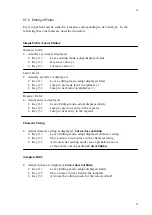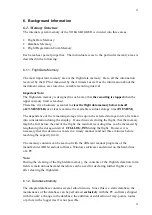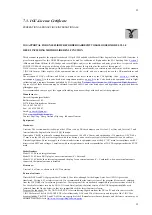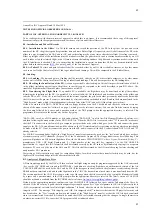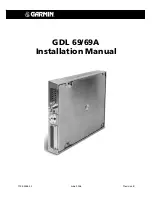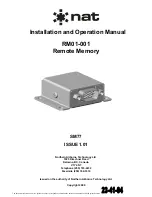
41
41
of a copy of the VALI-GCS.EXE short program file. The VALI file must have originated from the FAI/IGC ftp site given earlier,
or from the FR manufacturer. See
Annex B
for how to use.
6. Manufacturer's Changes.
Notification of any intended change to hardware, firmware or software must be made by the manufacturer to the Chairman of
GFAC so that a decision can be made on any further testing which may be required.
Ian Strachan
Chairman, IGC GFAC
Annexes:
A.
Notes for owners and pilots
B.
Notes for Official Observers and NACs
Any Queries to:
Chairman IGC GFAC, Bentworth Hall West, Alton,
Hampshire GU34 5LA, England
Tel: +44 1420 564 195; Fax: +44 1420 563 140;
email:
Annex A to IGC Approval Dated 10 May 1999
NOTES FOR OWNERS AND PILOTS -
PART OF IGC APPROVAL FOR GARRECHT VL1.0 GNSS FR
To be read together with the main terms of approval to which this is an Annex. It is recommended that a copy of the approval
document including annexes is kept with the equipment concerned, for the use of pilots and Official Observers.
Pilot's Responsibility.
It is the responsibility of the pilot to ensure or to note the following:
A1. Antenna
- That the antenna is positioned in order to give sufficient signal strength for IGC purposes. No deliberate attempt
must be made to inject data via the antenna; any abuse of this may lead to a future requirement to position antennas out of reach
of the flight crew.
A2. Geodetic Datum.
Latitudes and longitudes recorded by the FR are to a fixed Geodetic Datum of WGS84. No pilot action is
required except to ensure that other lat/long data such as for start, turn and finish points, is entered also to the WGS84 Geodetic
Datum (IGC rule).
A3. Observing the FR installation in the glider.
The pilot must ensure that an OO has checked the place of the equipment in
the glider and how it is fixed to the glider. If it may be difficult to obtain an OO immediately before takeoff, or to witness the
landing, you should ask an OO to seal the FR to the glider, and this can be done at any time or date before flight. See
para 3
in the
conditions of approval.
A4. Takeoff
- The pilot must ensure that the time and point of takeoff has been witnessed and recorded for comparison with that
recorded by the GNSS FR, see
para B1.2.
A5. Connection to Ports
. Although this approval does not presently require sealing of any ports or plugs, no attempt must be
made to pass unauthorised data into the FR. See paras
2.3
and
3
in the conditions of approval.
A6. Use in Motor Gliders
(including self-sustainers): When fitted (Hardware versions 3.3 or later) the internal microphone
system automatically records a three-figure ENL (Engine Noise Level) value with each fix. The FR must be placed so that engine
noise is clearly received when the engine is giving power; it should not be covered, for instance (although automatic gain will
continue to ensure high ENL readings under power). Pilots should note that other cockpit noises will produce ENL readings, and
avoid those which could be mistaken for use of engine. Generally the frequency filtering built in to the FR will avoid any problems,
but it should be noted that sideslipping with the cockpit DV panel open sometimes produces a low-frequency sound which will
register as high ENL, as will stall buffet, particularly if it causes engine bay doors to pant. Flight close to powered aircraft should
also be avoided, except for normal aero-tow launches. For ENL levels which have been recorded on GFAC tests,
see B.4.2
.
A7. After Flight
- The pilot must ensure that the time and point of landing has been witnessed and recorded for comparison with
that recorded by the GNSS FR (see
para B2.1
). Until an OO has witnessed the FR installation to the glider, the pilot must not alter
the installation or remove the FR from the glider. The OO will carry out the actions given in
para B2.3,
and the OO's copy of the
transferred flight data will be sent to the NAC. The OO does not personally have to transfer the data from the FR, but witnesses
the transfer and takes or is given a copy on electronic media. For FAI/IGC records and badge flights, the "High Security" option
must be used and not the "Test" option; see
para 2.4
of the Conditions of Approval. Different rules may apply for competition
flights, for which a central data transfer facility may be used, but for a flight to IGC record and badge rules, the above continues to
apply.
A8. Calibration of Barograph Function.
Pilots are advised to have a barograph calibration carried out either by the
manufacturer or by an NAC-approved calibrator before any GNSS FR is used for a claimed flight performance. An IGC-format file
showing the pressure steps used in the calibration must be recorded and kept. Altitude and height claims require a calibration for
the flight performance concerned, and speed and distance claims need a calibration for calculating the altitude difference of the
glider at the start and finish points. Also, the NAC or FAI may wish to compare pressure altitudes recorded on the FR for takeoff
and at landing, with QNH pressures for the appropriate times recorded by a local meteorological office.
A9. Warning on fitting the Binder Plug.
It should be noted that the 5 pins on the Binder plug are symmetrical, and the plug
inner is made of soft plastic with only a shallow keyway which is designed to maintain correct pin alignment. It has been found
possible to over-ride the keyway, and to fit the plug in any of five different orientations, some of which may damage the
equipment if power is then applied. It is recommended that the correct orientation be marked on the connector plug and the FR
unit.








